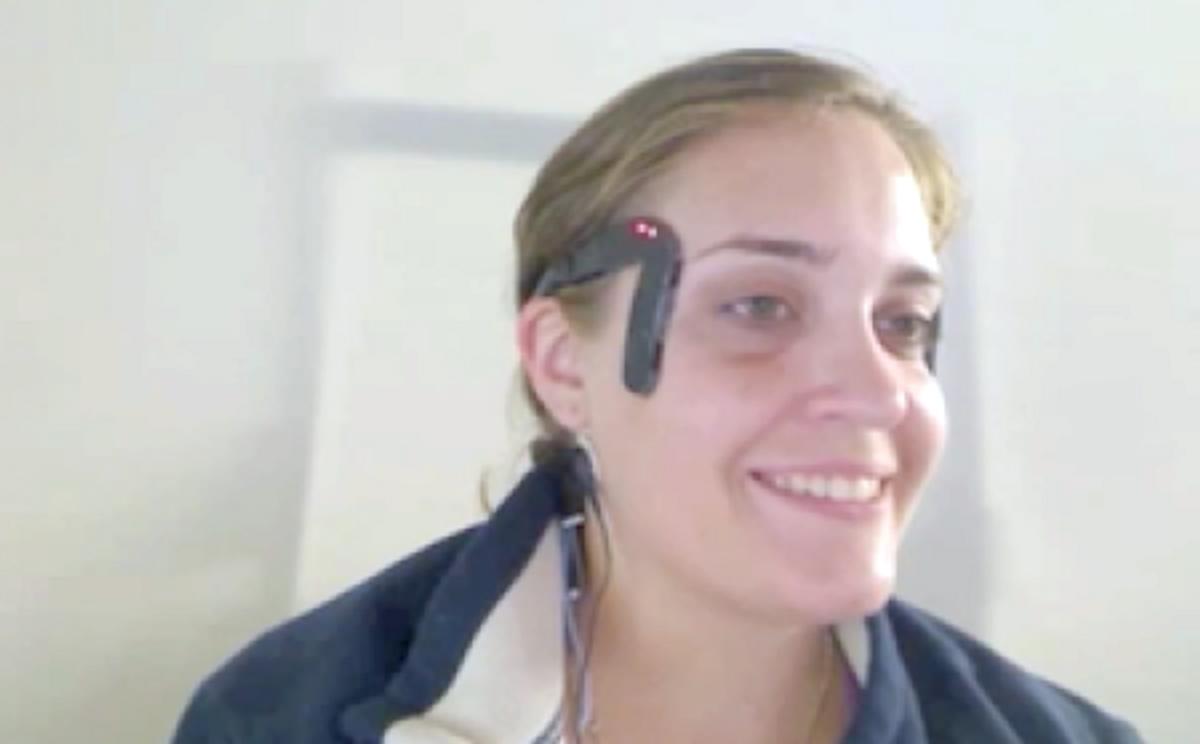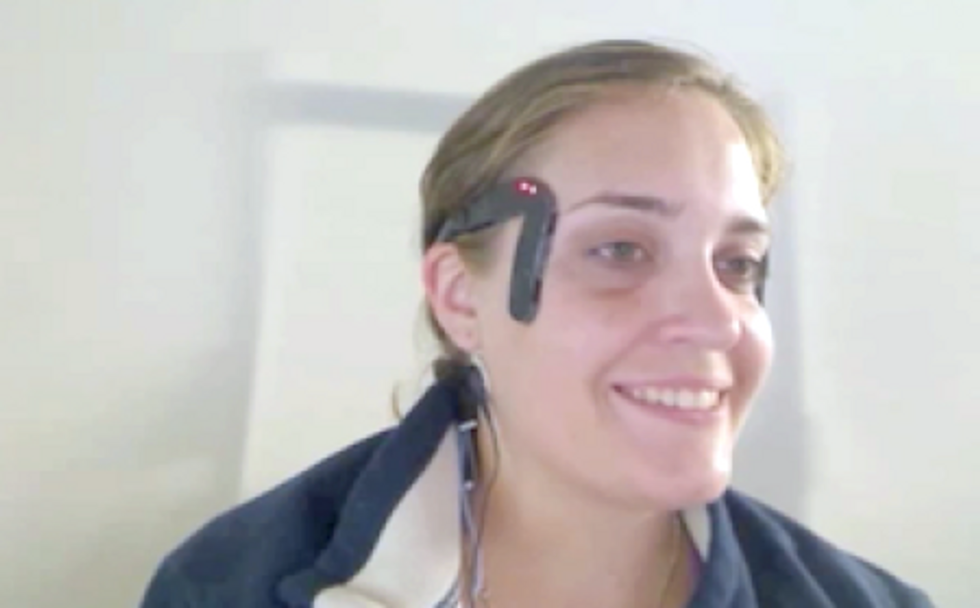Naughty robots can now be tamed with this snazzy smile-detecting device from the University of Tsukuba AI Lab. Anna Gruebler and her colleagues have developed a wireless headband that captures electromyographic (EMG) signals from the side of the face, detecting when you're smiling with delight or frowning with disapproval.
Unlike cameras with smile-detection algorithms, this device can work in low light, while you're walking around, and when you're not looking into your computer's camera. Part of the charm, the researchers say, comes from the discreet headband design that beats traditional face electrodes and wires.
Last year, Gruebler proposed the device to control avatars on Second Life in a hands-free way, as in the explanation video below. More users would approach her avatar, she says, because it was smiling and looked friendly.
Their current version supports smile and frown detection at a success rate of over 97 percent and has been used to train a Nao humanoid robot in real-time, as shown in this video released at the 2011 IEEE-RAS International Conference on Humanoid Robots, in Bled, Slovenia, last week:
The trainer tries to teach the robot her preference: Give the ball or throw it. Although the Nao starts out slow and hesitant, it speeds up after acquiring experience and feedback from the trainer. Their study compared it to using a manual interface: While users made mistakes using a dial, they never confused smiling and frowning -- a natural, intuitive way to interact with a robot.
The main idea, the researchers say, is that it's similar to how parents teach and encourage babies.
The next step is to apply the device to other real-life situations. If you could train a robot with a smile or frown, what would you have it do?
Angelica Lim is a graduate student at the Okuno and Ogata Speech Media Processing Group at Kyoto University, Japan.




